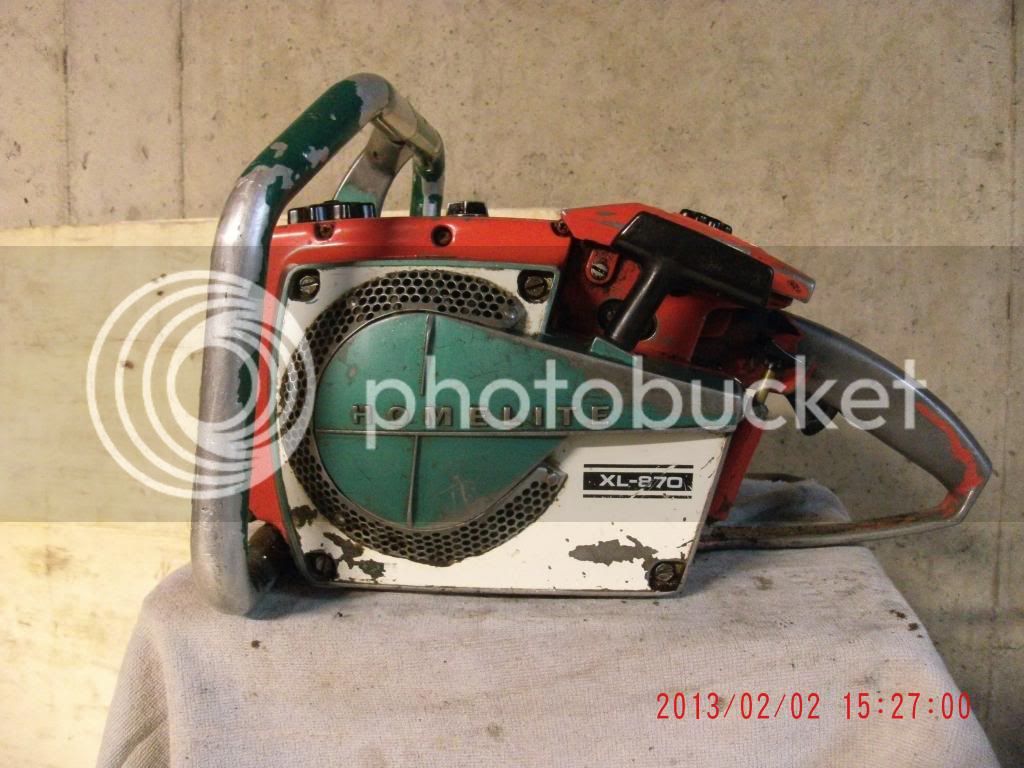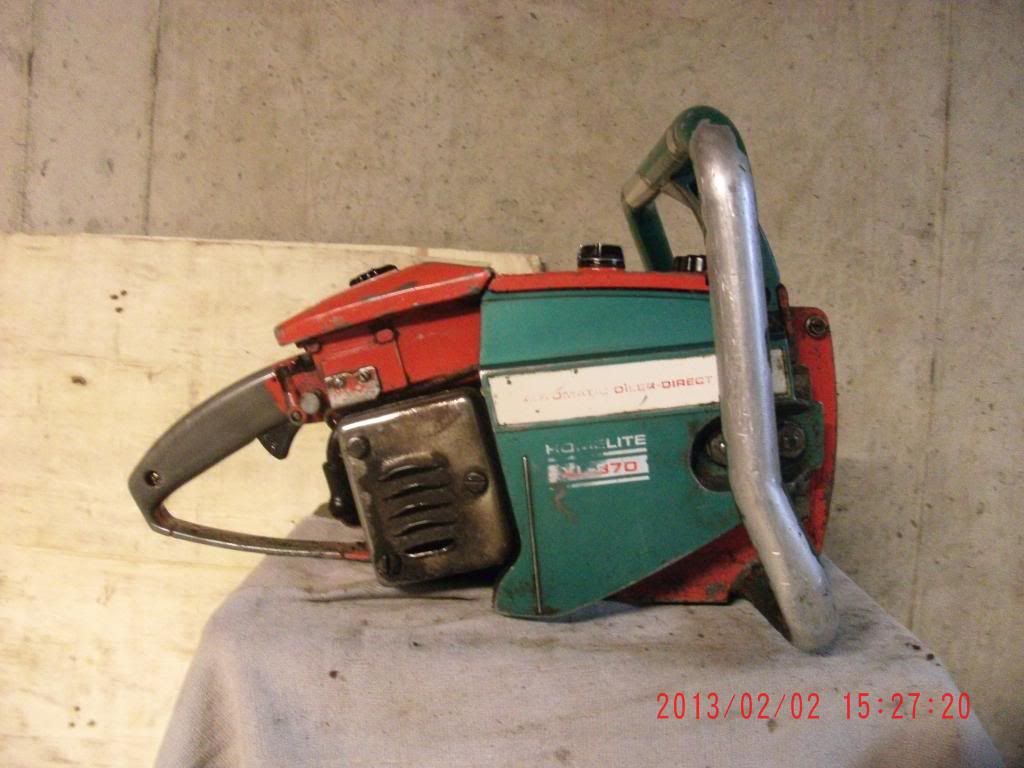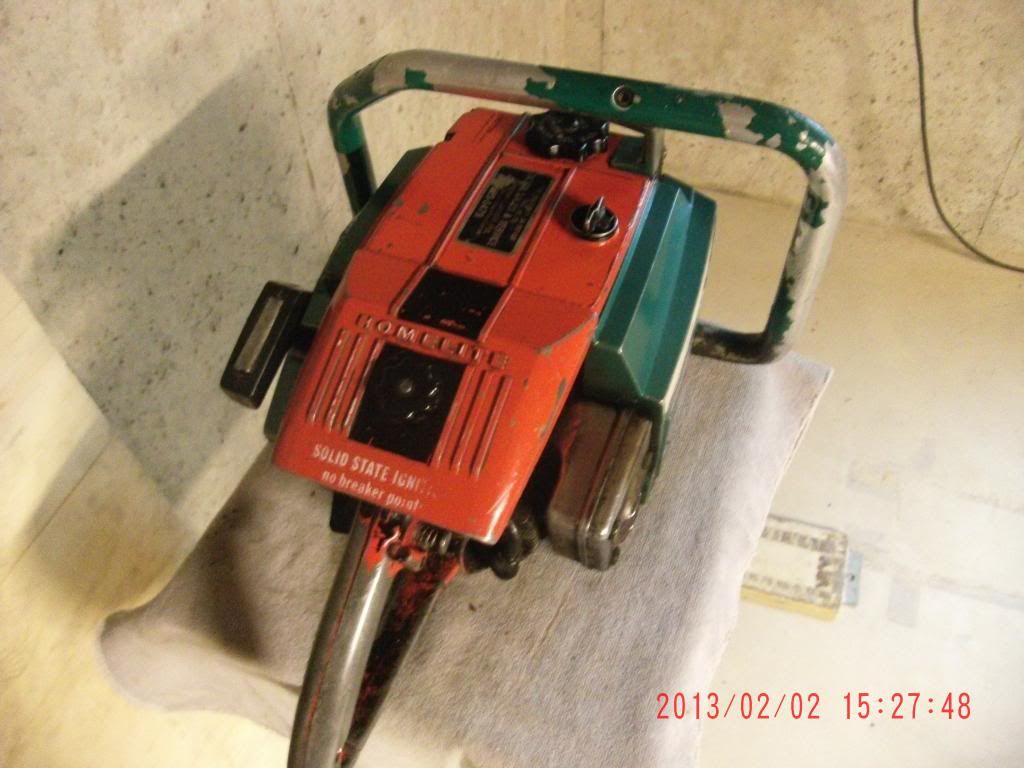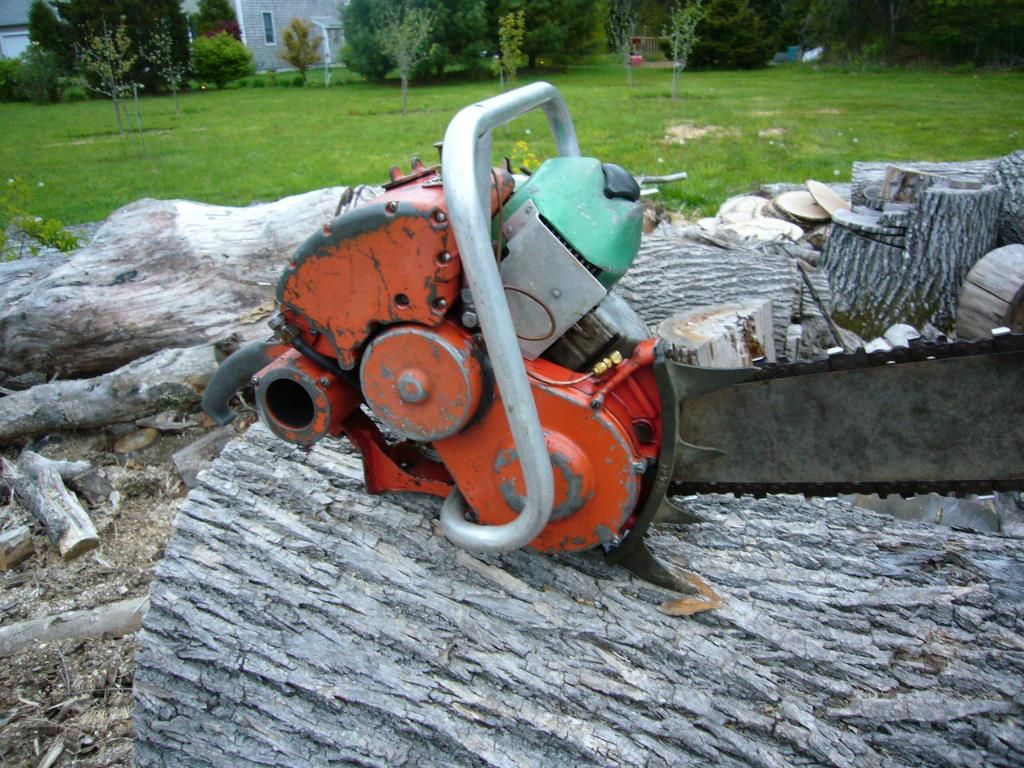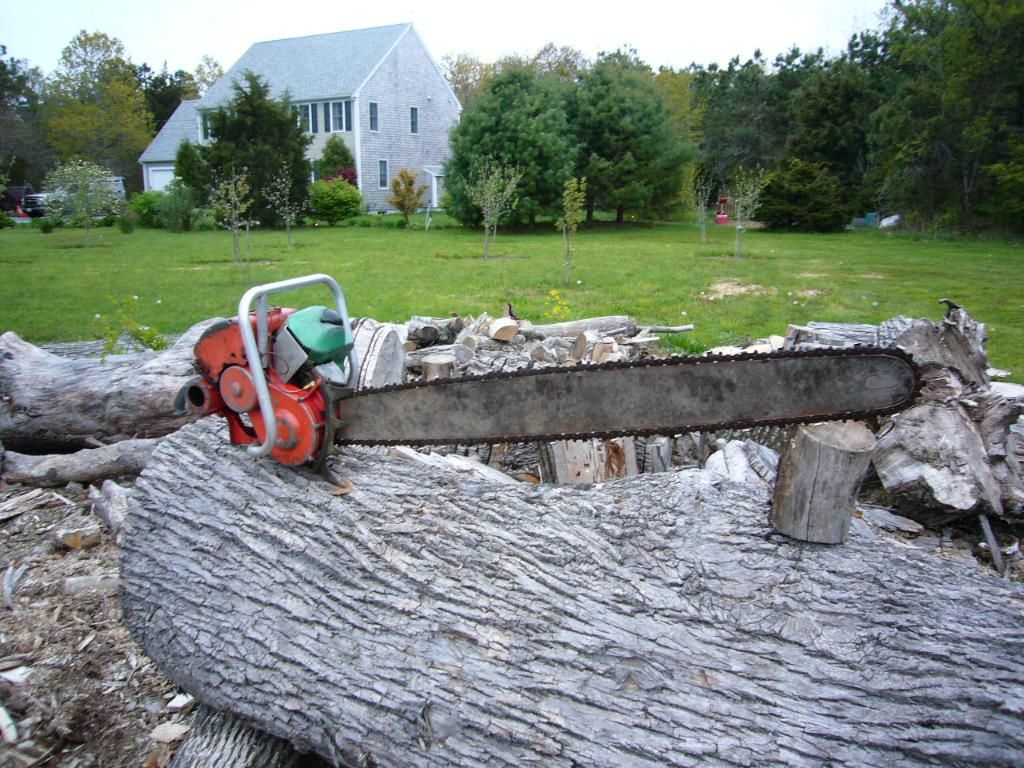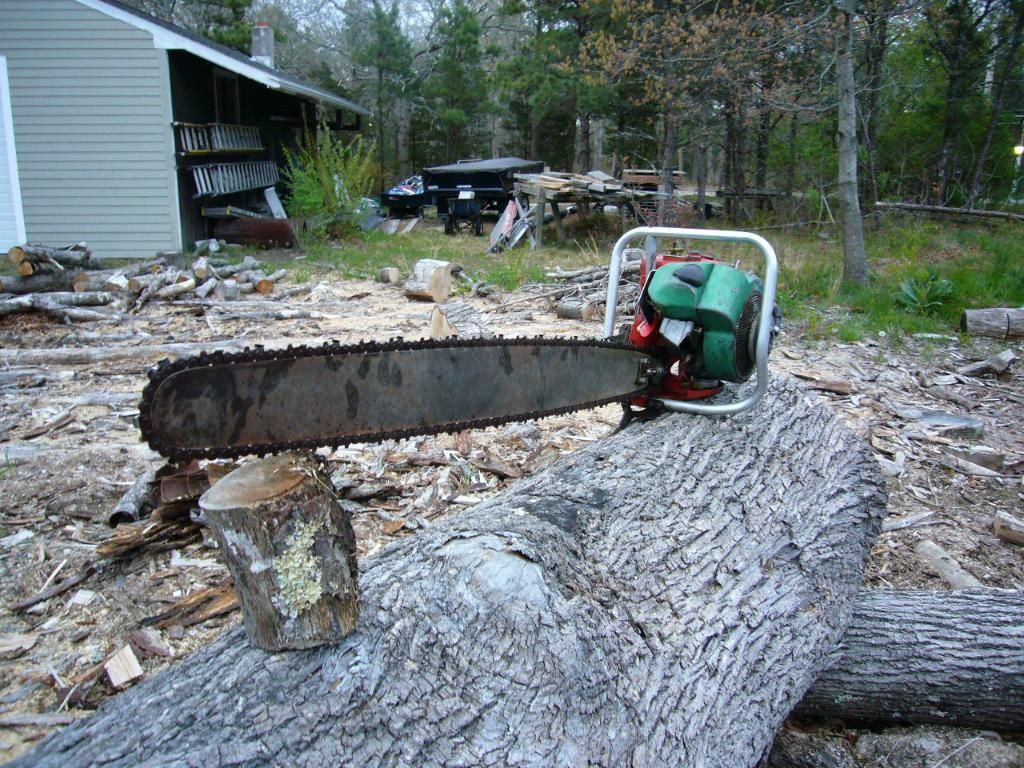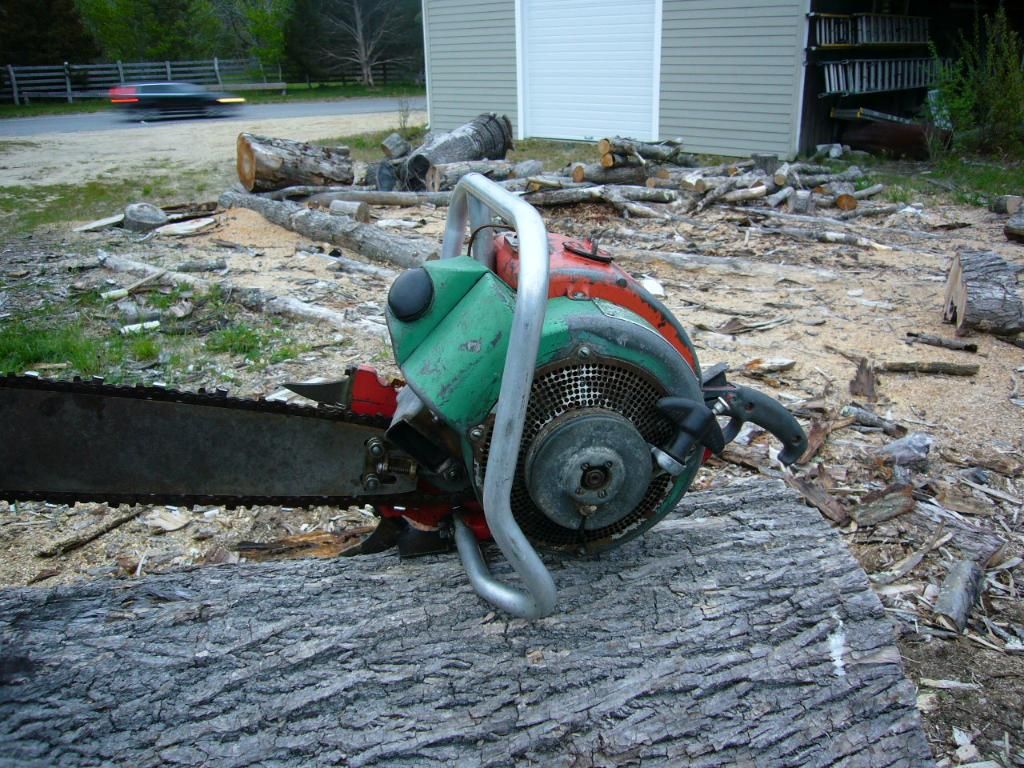Eccentric
Mister Wizard
I've been working on an XL923 and a C52. The clutch shoes were sheared (6 bronze looking shoes) in the 923, so shoes were ordered and arrived. While waiting, I was looking a bit at the C52. I'm wanting to run .404 on a short bar, so took a look at the spur sprocket (7T 3/8) and then the clutch. I was surprised to NOT find a clutch similar to the xl923, but with 3 shoes. Instead, it has 3 BIG shoes that make as much contact as the XL923s 6! Another surprise was that the C52 has an inboard clutch vs the outboard setup on the xl923....
That's what I'd been trying to tell you in those last few posts I'd made about those clutches. Must've just burried the info in my usual 'too wordy' posts....
You're referring to the 'deflector' on the XL-923? It's just a 'spitback collector' (catches some of the fuel spit back out of the carb of reed valve saws......to be sucked back in) and isn't really needed. It just keeps the carb box a little cleaner/dryer.
I strongly suggest you rebuild the carbs and replace the fuel lines and filters on both saws.
As far as the 7/8 tooth question........what pitch chain are you going to run? Both your C-52 and XL-923 will easily pull 3/8-8 on 20-24" bars. I would NOT recommend that you run .404-8 on either of them (stick with 7 tooth with .404). A 3/8-8 rim is about the same diameter as a .404-7 rim BTW.
Strangely enough, I believe the three shoe clutch on the XL-700/800/900 series saws is the HD unit. My SXL-925 IPL states that the 3 shoe clutch was used on the SXL-925W (the "Western" version, with the full wrap handlebar......and intended for the PNW market where longer bars were usually used). My Western is so equipped.
The 77/82cc XL700/800/900 series saws used both 3 and 6 shoe clutches. They are completely different clutch setups (the 3 and the 6), with different clutch hubs, shoes, and drums.
The C-series and Zip series used a different clutch setup than the XL700-900 series. Those large frame Homelites can also be found with 3 and 6 shoe clutches. However, with these large frame saws, they simply omitted every other clutch shoe to make a 3 shoe clutch (using the same clutch hub, shoes, and drum). This seems to only be on the C-5/51/52 and probably the Zip. It looks really weird (like something's missing), but that's the way they did it.
I believe the larger C-series saws (C-7/71/72 and C-9/91) had all six shoes installed from the factory. Same with the XP-Series saws (which are a continuation of the C-Series) The C-Series IPL's I've seen also state that C-5/51/52 saws outfitted with the gear drive conversion clutch cover should be equipped with all six shoes...
The three shoe clutch on the XL-900 series saw has basically the same amount of contact area on the drum as the six shoe clutch. The shoes on the three setup are roughly twice as wide (contacting twice the circumference of the inner surface of the drum) as the shoes in the six setup.
On the C-Series clutches (three and six shoe configurations), the clutch hub/spider and shoes are the same parts used in both configurations. The three shoe setup simply omits every other shoe. There are three 'shoe sized' gaps where nothing is contacting the surface of the drum. This means that the C-series three shoe setup has 1/2 the contact area that the six shoe configuration has. I wish I had pics to show you. If you still have trouble grasping what I'm saying, I'll pull the clutch covers on a couple of my saws and shoot some pics for you.
Jerry and Chris have answered your C-series line replacement question. I'll add my $.02 based on my experience. The tank fitting sometimes will easily unscrew. When that happens, you're in luck as you can just put the new line and filter on the fitting and thread it back inside the tank. I like to mark the 'down' side of the fitting as it's in the tank (before unscrewing it) with a sharpie. This way, I can put the line on the fitting in such a way that the 'natural curve' of the line (from being in a roll) goes down to the bottom of the tank.
Other times, the fitting is pretty well locked into the tank by corrosion, and it just plain don't wanna come out. Then you have to either remove the cover (dealing with those fragile little screws) or use a piece of wire or fishing line to guide the tubing onto the fitting from the inside of the tank. A hemostat can help push the line onto the fitting.
I use 3/16" ID automotive fuel line from the tank fitting to the carb. The OD of this line seals well against the pass through hole in the carb box........keep dust from being sucked in through there.
Last edited:





